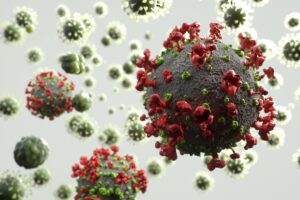Understanding Shingles: Symptoms, Treatment, and Prevention
A decline in immune function can lead to shingles, a condition many are at risk for. Without early treatment, shingles can cause a painful complication known as postherpetic neuralgia. In this article, Professor Daisuke Watanabe from Aichi Medical University Dermatology, explains the symptoms, treatment, and prevention of shingles in detail.
What is Shingles?
Shingles is a viral infection affecting the skin, caused by the varicella-zoster virus (VZV), the same virus responsible for chickenpox. Common symptoms include:
- Appearing on one side of the body only.
- Causing pain.
- Producing a strip of red spots or blisters along a nerve path.
- Causing severe pain, sometimes so intense it disrupts sleep at night.
Symptoms commonly appear on the upper body but can also affect the face and around the eyes.
Causes and Characteristics of Shingles
Anyone who has had chickenpox may develop shingles. The risk increases with age.
According to domestic epidemiological studies, the incidence of shingles begins to increase in the 50s and peaks in the 60s, with women being particularly susceptible.
The Link Between Shingles and Infection
Shingles itself is not contagious. However, people who have never had chickenpox, infants, children who have not been vaccinated, and those with low immunity are at risk of catching the virus. Therefore, it is advisable to avoid contact with these groups.
The Mechanism Behind Shingles
Shingles occurs through a specific mechanism.
The mechanism involves the following steps:
| Step | Description |
|---|---|
| 1. Chickenpox occurrence | The virus enters the body and causes symptoms of chickenpox. |
| 2. Virus dormancy | Even after chickenpox resolves, the virus remains dormant in nerve ganglia. |
| 3. Shingles occurrence | With weakened immunity, the virus reactivates, causing symptoms of shingles. |
| 4. Nerve damage and pain | Even after skin symptoms resolve, lingering nerve damage can cause persistent pain. |
Shingles, like chickenpox, is caused by the same virus. Those who have experienced chickenpox are at risk of developing shingles due to aging or weakened immunity. Early detection and treatment are crucial.



